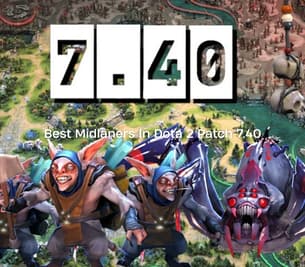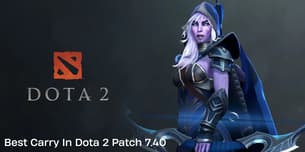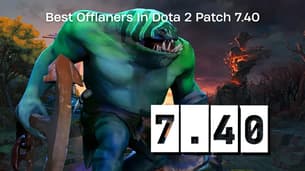
Gamification outside of games: how interactive content conquers a game audience

Today, games are not only entertainment, but also a cultural phenomenon. Millions of people around the world play video games, participate in sports, watch streams, and discuss their favorite characters. However, gaming culture goes beyond virtual worlds - it actively penetrates marketing, education, social networks, and even literature. Increasingly, brands and creators of content use gamification - elements borrowed from games - in order to interest and involve the audience.
This is especially pronounced in interactive formats. One of these examples is AI story maker which is used as a tool that allows everyone to feel like a hero of a fascinating story. You set the parameters of history-genre, characters, and mood, and then artificial intelligence adapts to your style and offers options for developing the plot. The user does not just read, but actively participates in the creation of the world. This is exactly what people who grew up on RPGs and visual novels need - the opportunity to influence the outcome of history.
Why is the gamer audience so responsive to interactivity?
Gamers are used to being not observers, but participants. They do not just look at what is happening; they decide: go right or left, save or betray, hide or attack. Such an experience forms a special type of content consumption - it must be involving, reactive, and personalized.
When an interactive format offers a choice, reward, progress, and an element of competition, it instantly causes interest among the game audience. Even if we do not have a game in the usual sense, but, say, an advertising campaign or an online test in which you can “pump” yourself and find out which superhero you are, Gamer feels familiar mechanics and plays with pleasure.
Where is gamification outside the games?
Marketing and branding
Brands have long realized that simple advertising is no longer working. To attract attention, you need to create an experience. Many companies introduce mini-games on their sites, use AR-filters on Instagram, and hold quests with gifts. For example, to get a discount, the user needs to go through the quiz or collect “achievements”. This works especially well on a young audience that longs for challenge and sensations.
Education and self-development
Platforms for learning introduce games to make the process less boring. Levels, badges, leaders, rewards for regularity - all this helps to motivate students. Duolingo is a classic example: a green owl recalls how important it is not to interrupt a series of classes, but “gems” give for progress. This motivates no worse than experience in the game.
Content in social networks
Quizzes, polls, challenges, and visual novels in Stories - interactive content is gaining popularity on Instagram and TikTok. It makes a response because it allows the user to be part of the action. Scenarios work especially well, where a person himself chooses the development of events, as in the “Choose your Way” format.
Literature and storytelling
As we have already mentioned above, tools like the AI Story Maker from Talefy transfer gaming mechanics to the world of literature. The creator becomes not just an author, but a partner in the game with AI. Together they build a plot, invent characters, and make elections. This is not just a text - this is a process close to the passage of the plot RPG.
Gamification as an instrument of involvement
It is important to understand that the essence of gamification is not to create a full-fledged game, but rather the use of game mechanics: points, levels, missions, competitive elements, progress, and customization. These components cause the user a familiar reaction: I want to continue, I want to win, I want to try again.
That is why gamification has become an integral part of content, which is focused on gamers. They already have a “vaccination” of interest in such formats, and if the brand or project speaks this language, it becomes “its own”.
Here are examples of successful use:
- Netflix and Black Mirror: Bandersnatch - a film where the viewer themselves chooses the development of the plot. The idea instantly attracted gamers because it is essentially a quest in the form of a movie.
- Nike Run Club - The run for running, where users compete, get achievements, and participate in challenges. For gamers, this is not just a sport, but the usual gameplay.
- Burger King in Spain conducted an AR game in which it was necessary to "set fire to" the advertising of competitors through the phone camera to get a discount. The campaign caused a storm of emotions and many references on social networks.
Why is it important today?
The modern audience wants to participate, and not just observe. This is especially true for Generation Z and millennials - people who grew up on SIMS, World of Warcraft, Minecraft, and Mass Effect. They will not watch a video for a long time or read the article if there is no action, interaction, or response.
Gamification is not a fashionable trend, but a language that millions speak. This is a way to keep attention, cause emotions, form loyalty, and involve deeper.
Final Thoughts
Interactive content with gaming elements is a bridge between brands and a gaming audience. This is an opportunity to speak the same language, use familiar patterns of behavior, and turn the consumption of content into an exciting process.

Kateryna Prykhodko ist eine kreative Autorin und zuverlässige Mitarbeiterin bei EGamersWorld, die für ihre fesselnden Inhalte und ihre Liebe zum Detail bekannt ist. Sie kombiniert Storytelling mit klarer und durchdachter Kommunikation und spielt eine große Rolle sowohl bei der redaktionellen Arbeit der Plattform als auch bei der Interaktion hinter den Kulissen.
 Die besten Midlaner in Dota 2 Patch 7.40Entdecke die besten Midlaner in Dota 2 Patch 7.40 – Verbesserungen, Stärken und Gewinnrate.
Die besten Midlaner in Dota 2 Patch 7.40Entdecke die besten Midlaner in Dota 2 Patch 7.40 – Verbesserungen, Stärken und Gewinnrate. LEC Versus 2026 – Leitfaden für Zuschauer: Termine, Zeitplan, Format, TeilnehmerLEC Versus 2026 ist da! Schaut euch den kompletten Spielplan und die Teamaufstellungen an. Verfolgt das Duell zwischen den LEC-Veteranen und den ERL-Schwergewichten im Kampf um den ersten Titel der Saison.
LEC Versus 2026 – Leitfaden für Zuschauer: Termine, Zeitplan, Format, TeilnehmerLEC Versus 2026 ist da! Schaut euch den kompletten Spielplan und die Teamaufstellungen an. Verfolgt das Duell zwischen den LEC-Veteranen und den ERL-Schwergewichten im Kampf um den ersten Titel der Saison. Beste Beförderung in Dota 2 Patch 7.40Entdecke den besten Carry in Dota 2 Patch 7.40 - Statistiken, Stärke und Gewinnraten.
Beste Beförderung in Dota 2 Patch 7.40Entdecke den besten Carry in Dota 2 Patch 7.40 - Statistiken, Stärke und Gewinnraten. Beste Offlaner in Dota 2 Patch 7.40Entdecke die besten Offlander in Dota 2 Patch 7.40 - Statistiken, Gewinnraten und Stärken.
Beste Offlaner in Dota 2 Patch 7.40Entdecke die besten Offlander in Dota 2 Patch 7.40 - Statistiken, Gewinnraten und Stärken.


